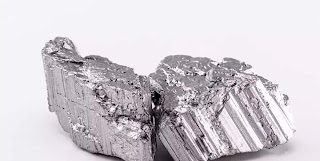Today, rare earth metals are used to make high-performance magnets. However, the method of extracting these metals from the soil is not at all environmentally friendly.
Researchers have recently solved this problem. A group of researchers from the University of Cambridge, with the help of some colleagues in Austria, have discovered an alternative method of making high-quality magnets.
This new method can be used instead of the conventional method of making magnets. This will reduce our dependence on Earth’s rare earth metals.
New Methods Of Making Magnets Are Therefore Needed
There is a growing tendency to use environmentally friendly technologies such as wind turbines or electric vehicles to build a carbon-free economy to combat climate change. And building these technologies requires advanced and effective high-performance magnets.
Currently, rare-earth metals are needed to make these durable magnets.
Although these elements or metals are called ‘rare earth metals’, they are actually not that rare in nature. However, extraction of these metals is quite complicated.
Currently, China is far ahead of other countries in the production of these rare earth metals. This information has emerged in a report published by the University of Cambridge.
According to the report, China supplied 81 percent of the global demand for rare earth metals in 2017.
Meanwhile, the western world’s competition with China in the field of technology is increasing day by day. As a result, many institutions and researchers in Europe and America are trying to use the alternatives of these rare earth metals.
Although rare earth metals are abundant in our earth, they are not easily mined. Moreover, the methods by which these metals are extracted from mines are also not environmentally friendly.
For these reasons there is a need for an alternative approach to reduce dependence on rare earth metals. And it is from this necessity that the researchers in Cambridge and Austria derive their inspiration for their work.
What Is ‘Tetratenite’ And How Is It Formed?
Tetratenite is a type of mineral. It is also called ‘cosmic magnet’.
This mineral is usually found in comets or meteorites, consisting of a mixture of iron and nickel. Its atomic structure is such that this mineral was considered very difficult to make artificially.
It takes millions of years for this material to form in meteorites. And this material is needed to make high-performance magnets.
Attempts to make tetratenite synthetically in the laboratory have been made many times before. But those efforts were quite complex. As a result, those methods were not very practical.
However, Cambridge scientists have discovered that tetratenite can be produced artificially by adding a common element like phosphorus to a mixture of iron and nickel. This method is very simple and not expensive at all. And this method can produce large quantities of tetratenite.
The researchers tested the structural properties of iron and nickel by adding small amounts of phosphorus. Phosphorus is an element found in meteorites. The researchers noticed that after adding phosphorus, the material acquires a certain type of structure. This structure they later identified as tetratenite.
The researchers then mixed different amounts of iron, nickel and phosphorus and tested the reaction. And through this they were able to increase the rate of formation of tetratenite by 11 to 15 times.
At the end of the research, they were able to form tetratenite in just a few seconds.
According to Professor Lindsay Greer of Cambridge’s Department of Materials Science and Metallurgy, this method required no special processes to produce tetratenite. The researchers were quite surprised at the beginning.
Professor Lindsey Greer himself led the research. He said, previously it was thought that it would not be possible to make tetratenite without very complex or extreme methods. Because it takes millions of years for this material to form in comets.
That is, this research has completely changed the previous ideas of scientists about tetratenite.
However, more research is needed to determine whether this method will be useful for producing large-scale high-performance magnets or durable magnets. The researchers hope to work with the world’s major magnet manufacturers on this.





